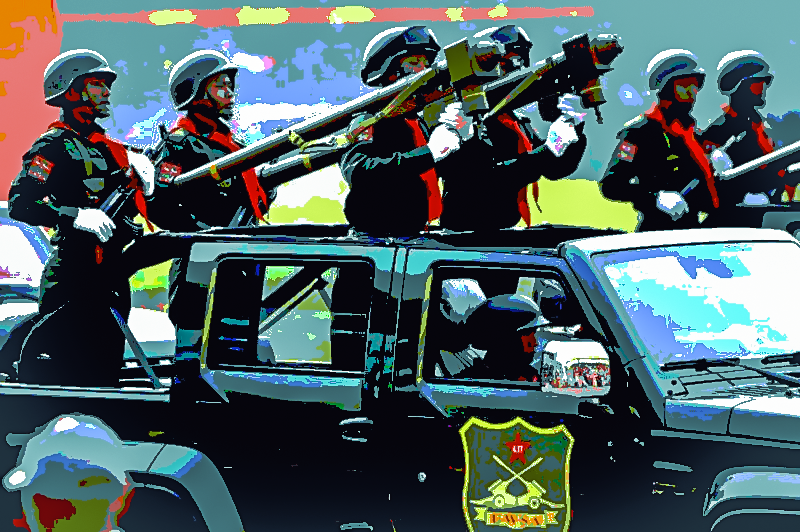Myanmar Spring Chronicle – November 01
MoeMaKa, November 02, 2023
The “Wa” State Issues Warning on Military Invasion and Extends Aid to War Refugees
While not officially acknowledged, the “Wa” regional authorities in northeastern Myanmar, representing one of the most potent ethnic armed groups with a self-governing status, have declared their intent to respond decisively to any military invasion of their airspace and territory.
Since 1989, when the powerful Wa and Kokang ethnic armed groups broke away from the Communist Party of Burma, the Wa region has asserted its autonomy, maintaining a strong military presence and economic independence. Operating almost independently, it has effectively managed its defense, economy, and administration without being directly influenced by the bureaucratic mechanisms of the Myanmar government.
Despite not having official recognition as an independent entity, the Wa region’s status approaches that of independence, with a self-sufficient defense, economic stability, and autonomous administration. In contrast to mainland Myanmar, the northeastern region has maintained economic ties with China, contributing to its robust development, particularly in a border area known for its economic prowess.
In the current scenario where the three northern alliance armed groups are attacking military council camps, the Wa authorities refrain from publicly endorsing any specific armed group. Although there might be covert support behind the scenes, the Wa region aims to maintain its status without openly backing or engaging in armed conflicts.
The Wa region’s achieved position is an aspiration for many ethnic armed groups in Myanmar. Continuous battles in other regions have prevented successive mainland governments from expanding their influence into the Wa region. This has allowed the Wa region to build and sustain its military and economic power steadily over decades.
Despite the recent warrant issued by the Chinese government against two leaders and their relatives from the Wa region, these efforts signify the region’s determination to avoid entanglement in the current conflict and uphold stability. Reports indicate that the Wa region is actively assisting refugees fleeing the conflict in the Kokang region, which mirrors the Wa region’s situation.
Major General Zaw Min Tun, the military council’s spokesperson, clarified in a Chinese broadcast interview with Phoenix News that no Myanmar civilian employees reside in the Wa region. He emphasized the independent status of the Wa region, stressing the fragility of the peace, which could be disrupted if military forces intervene.
In the latest update on November 1, after six days of operation, nearly 90 military council camps in the northeastern region have been seized by the three northern alliance armed groups and the joint groups of BPLA, PLA, and MDY PDF. Ongoing battles and roadblocks persist on the Nawnghkio-Muse road, rendering it impassable.
In Kachin State, the military council continues to bomb and attack Laiza, notifying China about the air strikes due to the proximity to the border. In southern Myanmar, fighting rages on in Nyaunglebin Township, forcing thousands of local residents to flee.
As the war fronts expand, from defensive to active and dominant war, the people of Myanmar are contemplating the potential impact on their future and envisioning which towns and villages will endure the preliminary stages of war. The war-torn areas, the unruled vacant zones of the former Kayah State, now declared Karenni State with an interim state administrative unit, face challenges in social organization, rehabilitation, health, education, and law enforcement.

